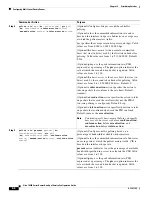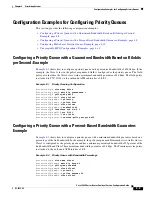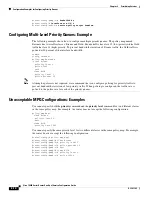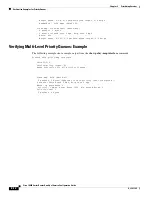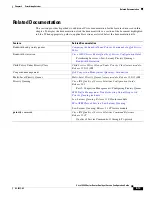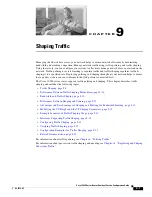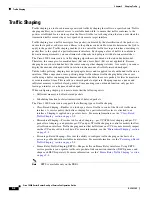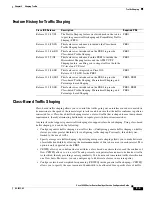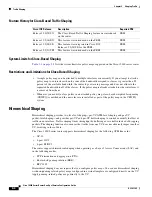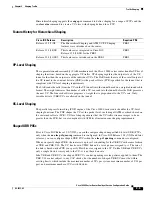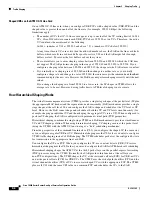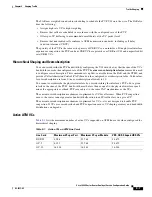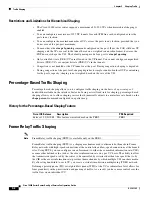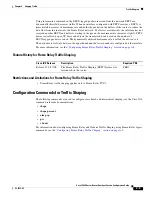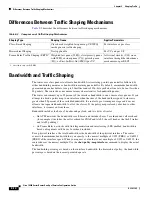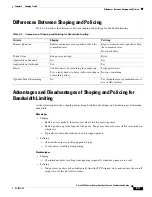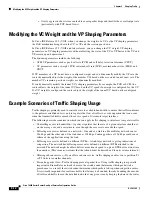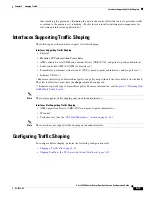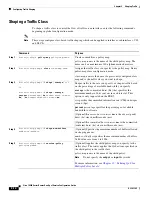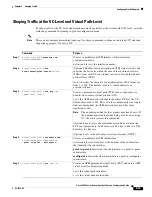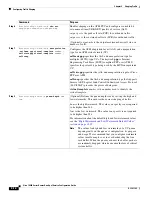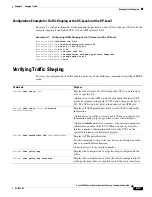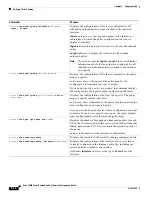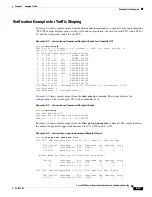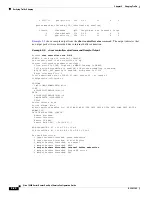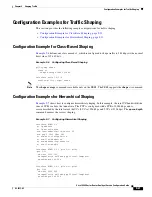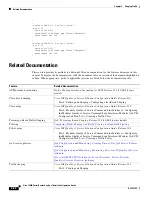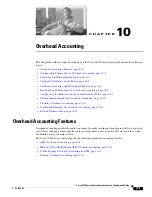
9-8
Cisco 10000 Series Router Quality of Service Configuration Guide
OL-7433-09
Chapter 9 Shaping Traffic
Traffic Shaping
Restrictions and Limitations for Hierarchical Shaping
•
The Cisco 10000 series router supports a maximum of 31,500 VCs when hierarchical shaping is
enabled.
•
You can configure a maximum of 127 VP tunnels for each ATM line card, configured across the
ports in any fashion.
•
You can configure the maximum number of VCs across the ports in any fashion, provided that you
do not exceed the per-port maximum.
•
You must have the
atm pxf queuing
command configured on the port. If not, the SAR still does VP
shaping and the VCs are sent to the tunnel based on a weighted round robin format; however, the
PXF does not shape the VCs. The default queuing mode for a port is
atm pxf queuing
.
•
Only variable bit rate (VBR) VCs are allowed in the VP tunnel. You cannot configure unspecified
bit rate (UBR) VCs or constant bit rate (CBR) VCs in the tunnels.
•
Congestion is not handled at the VP tunnel or at the port. During congestion, shaping is degraded.
•
During congestion at the port-level, shaping degrades to simple round robin for all VPs contending
for the port’s capacity; shaping is not weighted based on the rate of the VPs.
Percentage-Based Traffic Shaping
Percentage-based shaping allows you to configure traffic shaping on the basis of a
percentage
of
bandwidth available on the interface. Instead of using a strict fixed-rate for shaping, percentage-based
shaping allows you to offer a shaping service that dynamically adjusts to an interface rate based on the
shape percent
command configured in a policy map.
History for the Percentage-Based Shaping Feature
Frame Relay Traffic Shaping
Note
Frame Relay traffic shaping (FRTS) is available only on the PRE1.
Frame Relay traffic shaping (FRTS) is a shaping mechanism used to eliminate bottlenecks in Frame
Relay networks with high-speed connections at the central site and low-speed connections at the branch
sites. Using FRTS, you can configure rate enforcement to either the committed information rate (CIR)
or some other defined value, such as the excess information rate, on a per-VC basis. The ability to allow
the transmission speed used by the router to be controlled by criteria other than line speed (that is, by
the CIR or the excess information rate) provides the mechanism by which multiple VCs can share media.
By allocating bandwidth to each VC, you create a virtual time-division multiplexing (TDM) network.
Defining a priority queue (PQ) or weighted fair queue (WFQ) at the VC or subinterface level allows for
finer granularity in the prioritization and queuing of traffic. As a result, you have more control over the
traffic flow on an individual VC.
Cisco IOS Release
Description
PRE Required
Release 12.2(31)SB2 This feature was introduced on the PRE3.
PRE3

